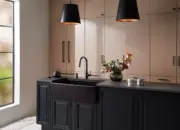As a homeowner, it is important to be aware of your plumbing system in order to stay safe. Knowing how your plumbing works and what common terms mean can help you identify and troubleshoot issues before they become major problems. This article will cover basic plumbing facts and terms every homeowner should know.
Water Supply System
The water supply system is part of your plumbing system that delivers clean water to your home. It includes a main water line from the street to your house and pipes throughout your home. The water supply system is pressurized, forcing water through the pipes under pressure to ensure that it reaches all areas of your home.
Water Heater
Your water heater is responsible for heating the water that comes into your home. Most homes use either a tank or tankless water heater. A water heater with a tank accumulates hot water in a sizable container and dispenses it when required, whereas a tankless water heater heats water as needed. Knowing which type of water heater you have can help you troubleshoot issues if you ever experience problems with your hot water.
Drainage System
The drainage system is part of your plumbing system that removes wastewater from your home. It includes pipes from your sinks, toilets, and other fixtures to a main sewer line carrying waste water away from your home. The drainage system is not pressurized and relies on gravity to remove waste water from your home.
Traps
Traps are an important part of your drainage system. They are U-shaped pipes that are installed beneath sinks, toilets, and other fixtures. The purpose of traps is to create a barrier that prevents sewer gases from entering your home. Traps work by allowing a small amount of water to remain in the U-shape of the pipe. This water creates a seal that prevents gases from passing through.
Venting System
The venting system is an important part of your plumbing system that helps to prevent sewer gases from entering your home. It includes pipes from your drain lines to your home’s roof. The venting system allows air to enter the drain lines, which helps to equalize pressure and prevent sewer gases from entering your home.
Water Pressure
Water pressure refers to the force at which water is flowing through your pipes. In most homes, the water pressure should be between 40 and 80 psi (pounds per square inch). Insufficient water pressure can lead to water supply issues, while excessive water pressure can harm your plumbing system.
Shutoff Valves
It allows you to turn off the water supply to a specific home area. Several types of shutoff valves exist, including ball and gate valves. Knowing where your shutoff valves are located can help you quickly turn off the water supply in the event of a plumbing emergency.
Leaks
Leaks are one of the most common plumbing problems that homeowners face. Leaks can occur in any part of your plumbing system, including pipes, fixtures, and appliances. Signs of a leak include damp areas on walls, ceilings, or floors and an increased water bill.
In conclusion, having a basic understanding of plumbing facts can help you identify and troubleshoot issues before they become major problems. Knowing common terms and how different parts of your plumbing system work can also help you communicate more effectively with plumbers if you ever need to hire one. Remember to inspect your plumbing system for leaks and clogs regularly and to turn off the water supply in an emergency. By following these basic tips, you can help ensure that your plumbing system functions properly and efficiently for years to come.













